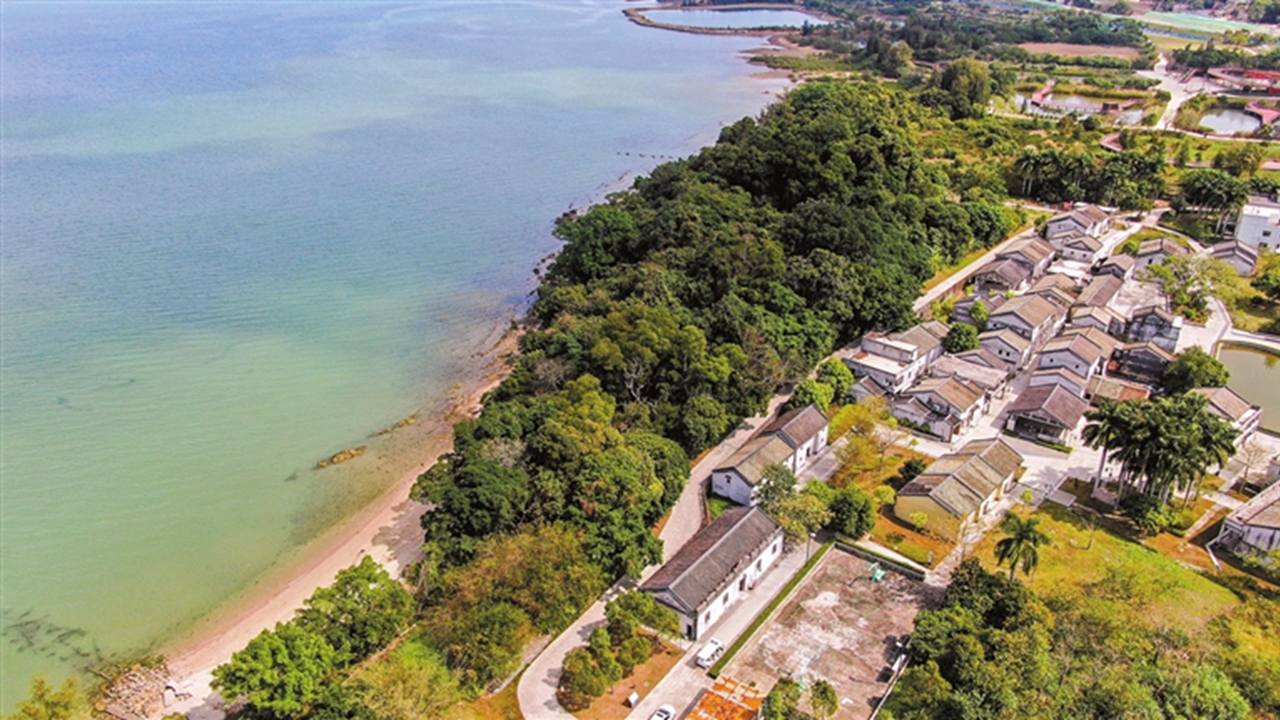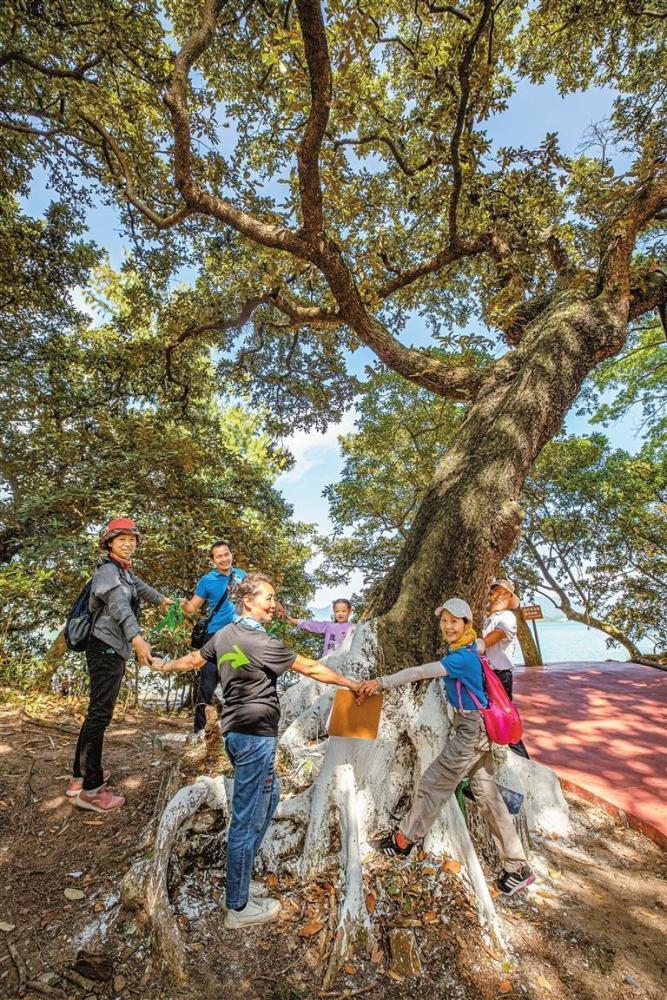Report on looking-glass mangroves released
A local environmental protection association released a report on the city’s resources of heritiera littoralis, or the looking-glass mangrove, which is the first of its kind in the city’s history, Shenzhen Evening News reported Thursday.
The plant is an important species for environmental protection in coastal areas, and the report can provide significant references for mangrove ecological education and ecotourism, according to the News.

An aerial view of an ancient looking-glass mangrove cluster at Baguang in Dapeng New Area. Li Jingchuan
Relevant government departments can plan ecotourism routes based on the report, said Zhu Zhu, director of the Shenzhen Spring Environmental Protection Volunteer Association.
The association has been recording the city’s mangrove trees with DBH (diameter at breast height) reaching over 2.5 centimeters since 2016. In November 2021, it began to conduct a comprehensive survey on the resources of the plant in Shenzhen and released the survey report Tuesday.
According to the report, there are currently 19 clusters of looking-glass mangrove in Shenzhen, including 1,871 plants with DBH greater than 2.5 centimeters and 22 trees over 200 years old. Among them, one plant is over 500 years old and two plants over 300 years.

Volunteers circle around a 223-year-old looking-glass mangrove tree. Wang Lie
The plant is a large tree with wing-shaped nuts, which is most easily recognized by the silvery scales on the underside of its leaves. The looking-glass mangrove is a kind of rare mangrove species, which is currently only found in China, Japan and India. The ancient looking-glass mangrove cluster at Baguang in Dapeng New Area is the most complete, oldest and largest looking-glass mangrove cluster found in China and even in the world so far.
The survey was conducted under the guidance of Professor Wang Wenqing, a Ph.D. supervisor from Xiamen University, who is also the director of the Mangrove Ecological Committee under the Ecological Society of China.